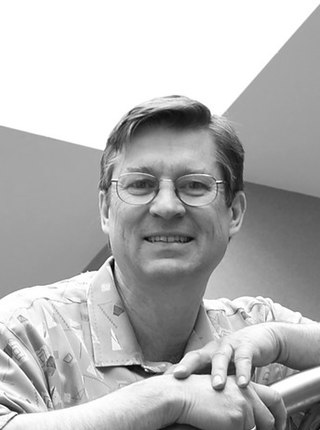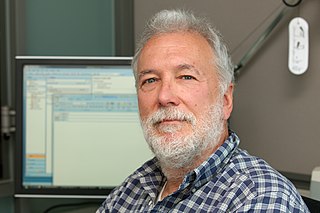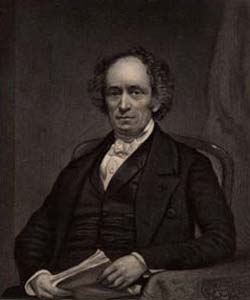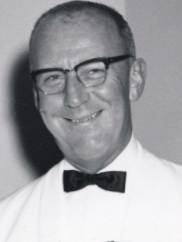External links
| International | |
|---|---|
| National | |
| Academics | |
| Other | |
| P ≟ NP | This biographical article relating to a computer scientist is a stub. You can help Wikipedia by expanding it. |
J. Eliot B. Moss is an American computer scientist active in the fields of garbage collection and multiprocessor synchronization. He is co-inventor with Maurice Herlihy of transactional memory.
He is currently (2012) a Professor of computer science at University of Massachusetts Amherst. He has served on the executive committee of SIGPLAN, the Special Interest Group for programming languages for the Association for Computing Machinery. In 2007 he was inducted as Fellow of the ACM, and in 2008 as a Fellow of the IEEE. In 2012, his paper on transactional memory was recognized with a Dijkstra Prize, shared with Maurice Herlihy.
He is also an Episcopal priest, ordained in 2005, currently serving as Vicar of St. John's Episcopal Church, Ashfield, MA. He resides in Amherst, MA, is married, and has a son and a daughter. He received degrees from the Massachusetts Institute of Technology, completing a BSEE in 1975, MSEE in 1978, and PhD in 1981. His dissertation was on nested transactions and was later published in a slightly revised form by the MIT Press (1985). He is co-author of The Garbage Collection Handbook with Richard Jones and Antony Hosking, published in 2011 by Chapman and Hall.

In computer science, garbage collection (GC) is a form of automatic memory management. The garbage collector attempts to reclaim memory that was allocated by the program, but is no longer referenced; such memory is called garbage. Garbage collection was invented by American computer scientist John McCarthy around 1959 to simplify manual memory management in Lisp.

Jay Wright Forrester was an American computer engineer, management theorist and systems scientist. He spent his entire career at Massachusetts Institute of Technology, entering as a graduate student in 1939, and eventually retiring in 1989.
In computer science, software transactional memory (STM) is a concurrency control mechanism analogous to database transactions for controlling access to shared memory in concurrent computing. It is an alternative to lock-based synchronization. STM is a strategy implemented in software, rather than as a hardware component. A transaction in this context occurs when a piece of code executes a series of reads and writes to shared memory. These reads and writes logically occur at a single instant in time; intermediate states are not visible to other (successful) transactions. The idea of providing hardware support for transactions originated in a 1986 paper by Tom Knight. The idea was popularized by Maurice Herlihy and J. Eliot B. Moss. In 1995, Nir Shavit and Dan Touitou extended this idea to software-only transactional memory (STM). Since 2005, STM has been the focus of intense research and support for practical implementations is growing.
David Joseph Herlihy was an American historian who served as the president of the American Historical Association. He wrote on medieval and renaissance life, and was married to fellow historian Patricia Herlihy. His study of the Florentine and Pistoiese Catasto of 1427 is one of the first statistical surveys to use computers to analyze large amounts of data. The resulting book examines statistical patterns in tax-collecting surveys to find indications of social trends.

Andrew G. Barto is an American computer scientist, currently Professor Emeritus of computer science at University of Massachusetts Amherst. Barto is best known for his foundational contributions to the field of modern computational reinforcement learning.

David Michael Ungar, an American computer scientist, co-created the Self programming language with Randall Smith. The Self development environment's animated user experience was described in the paper Animation: From Cartoons to the User Interface co-written with Bay-Wei Chang, which won a lasting impact award at the ACM Symposium on User Interface Software and Technology 2004.
Maurice Peter Herlihy is an American computer scientist active in the field of multiprocessor synchronization. Herlihy has contributed to areas including theoretical foundations of wait-free synchronization, linearizable data structures, applications of combinatorial topology to distributed computing, as well as hardware and software transactional memory. He is the An Wang Professor of Computer Science at Brown University, where he has been a member of the faculty since 1994.
The International Symposium on Computer Architecture (ISCA) is an annual academic conference on computer architecture, generally viewed as the top-tier in the field. Association for Computing Machinery's Special Interest Group on Computer Architecture and Institute of Electrical and Electronics Engineers Computer Society are technical sponsors.

James Richard "Jim" Goodman retired as professor of computer science at the University of Auckland in Auckland, New Zealand, and emeritus professor at the University of Wisconsin–Madison.
Dominic W. Massaro is professor of Psychology and Computer Engineering at the University of California, Santa Cruz. He is best known for his fuzzy logical model of perception, and more recently, for his development of the computer-animated talking head Baldi. Massaro is director of the Perceptual Science Laboratory, past president of the Society for Computers in Psychology, book review editor for the American Journal of Psychology, founding Chair of UCSC's Digital Arts and New Media program, and was founding co-editor of the interdisciplinary journal Interpreting. He has been a Guggenheim Fellow, a University of Wisconsin Romnes Fellow, a James McKeen Cattell Fellow, an NIMH Fellow, and in 2006 was recognized as a Tech Museum Award Laureate.

The Porter–Phelps–Huntington House, known historically as Forty Acres, is a historic house museum at 130 River Drive in Hadley, Massachusetts. It is open seasonally, from May to October. The house contains the collection of one extended family, with objects dating from the seventeenth to twentieth centuries. It was occupied from its construction in 1752 until the 1940s, when a member of the eighth generation of the family in the house turned it into a museum. Its collection is entirely derived from the family, and the extensive archives, including the original diary of Elizabeth Porter Phelps, are held at the University of Massachusetts Amherst. The house was added to the National Register of Historic Places in 1973, and is a central feature of the Forty Acres and Its Skirts Historic District, designated in 2023.

Heman Humphrey was a 19th-century American author and clergyman who served as a trustee of Williams College and afterward as the second president of Amherst College, a post he held for 22 years.
Lionel Delevingne is an author, journalist, and photojournalist who has lived in the United States since 1975. According to Véronique Prévost of Figaro/Journal Français, "Delevingne is beholden to the lineage of great picture journalists, and his talent, if not his inspiration, makes you think of the master of the genre, Cartier-Bresson."

Nir Shavit is an Israeli computer scientist. He is a professor in the Computer Science Department at Tel Aviv University and a professor of electrical engineering and computer science at the Massachusetts Institute of Technology.
W. Bruce Croft is a distinguished professor of computer science at the University of Massachusetts Amherst whose work focuses on information retrieval. He is the founder of the Center for Intelligent Information Retrieval and served as the editor-in-chief of ACM Transactions on Information Systems from 1995 to 2002. He was also a member of the National Research Council Computer Science and Telecommunications Board from 2000 to 2003. Since 2015, he is the Dean of the College of Information and Computer Sciences at the University of Massachusetts Amherst. He was Chair of the UMass Amherst Computer Science Department from 2001 to 2007.

Maurice A. Donahue was an American politician who served as President of the Massachusetts Senate from 1964 to 1971.

Kathryn S. McKinley is an American computer scientist noted for her research on compilers, runtime systems, and computer architecture. She is also known for her leadership in broadening participation in computing. McKinley was co-chair of CRA-W from 2011 to 2014.
Leon Joel Osterweil is an American computer scientist noted for his research on software engineering.

Hagit Attiya is an Israeli computer scientist who holds the Harry W. Labov and Charlotte Ullman Labov Academic Chair of Computer Science at the Technion – Israel Institute of Technology in Haifa, Israel. Her research is in the area of distributed computing.
Rachid Guerraoui is a Moroccan-Swiss computer scientist and a professor at the School of Computer and Communication Sciences at École Polytechnique Fédérale de Lausanne (EPFL), known for his contributions in the fields of concurrent and distributed computing. He is an ACM Fellow and the Chair in Informatics and Computational Science for the year 2018–2019 at Collège de France for distributed computing.